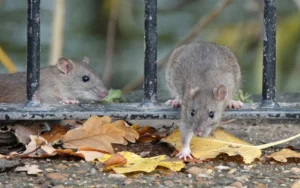
As the vibrant colors of summer fade and the crisp air of autumn settles in, many of us look forward to cozy evenings indoors. For residents of Southold, fall brings the unwelcome arrival of pests, when they seek shelter from the cooling temperatures.
These pesky invaders want warmth, shelter, and food. Sadly, your home is just what they need. So understanding which pests are most active in the fall and how to deter them is key to a comfortable, pest-free season. Preventing pests in the fall stops infestations before they begin.
The Hidden Dangers of Pest Infestations in Autumn
Fall pests are bothersome and pose real risks to your health. Once pests settle in for winter, damage increases quickly with:
- Disease transmission from rodents and insects, whether alive or dead.
- Allergic reactions from bites and stings that can be life-threatening.
- Contamination of food supplies and living spaces.
- Physical harm to children and pets from aggressive pest encounters.
- Rodents can chew through walls, wires, and insulation, creating fire hazards.
- Termites keep causing damage, even when it’s cooler, making buildings unlivable.
- Overwintering insects can stain walls, harm fabrics, and cause unsanitary conditions.
- Nesting and burrowing cause structural damage, which gets worse during winter.
Common Fall Pests in Southold
Here’s a look at the common culprits you might encounter as the leaves begin to fall:
- Rodents (Mice & Rats): These furry foes are perhaps the most notorious fall pests. As outdoor food sources shrink and temperatures fall, mice and rats will look for ways into homes. They can slip through even the tiniest cracks. They can cause structural damage, contaminate food, and pose health risks.
- Overwintering Pests: These insects don’t want to spend the winter outside either! They’ll squeeze through tiny openings to find a warm, quiet spot to “hibernate” until spring.
- Stink Bugs: These bugs have shield-shaped backs. They are known for the strong smell they give off when they feel threatened or get squished.
- Asian Lady Beetles: They often get mixed up with ladybugs. These beetles gather in big groups and can leave yellowish stains behind.
- Boxelder Bugs & Cluster Flies: These pesky bugs often sneak inside through windows, vents, and cracks.
- Spiders: Where there are insects, there are spiders! As other pests move indoors, spiders often follow their food source. While most are harmless, their webs can be a constant annoyance.
- Bed Bugs: After summer travel and back-to-school activities, bed bug infestations can rise. These hitchhikers can easily be brought into your home on luggage or clothing.
- Fleas: If you have pets, fleas can continue to be a problem in the fall as they seek warm hosts indoors.
- Wasps & Hornets: Many stinging insects die in winter. But fertilized queens look for safe places to overwinter, like your attic or crawl space. This can lead to new colonies forming come spring.
- Ants (especially Carpenter Ants): Ants can be a problem all year. However, carpenter ants tunnel through wood. They often become more noticeable in the fall as they search for food and water indoors.
- Cockroaches: These tough pests live well in warm, humid places. As it gets colder outside, they will happily go indoors to stay comfortable.
Why do these pests come in autumn?
Lower temperatures in the fall trigger their drive to migrate indoors, so breeding cycles peak before winter. Food scarcity also increases pests’ desperation to seek shelter inside.
How to Keep These Pests Out
Though these uninvited guests can be troubling, you can take steps to protect your home:
- Seal Entry Points: Look at your home’s exterior for cracks in the foundation, gaps near windows and doors, or places where utilities enter. Seal them thoroughly to block access.
- Maintain Cleanliness: A tidy home, both inside and out, is less appealing to pests. Store food in airtight containers, regularly empty trash, and keep your yard free of debris.
- Address Moisture Issues: Pests are drawn to moisture. Fix any leaky pipes for good ventilation in basements and crawl spaces, and eliminate standing water around your property.
- Professional Assistance: For ongoing issues or big infestations, it’s best to reach out to a local pest control service in Southold. They can spot the exact pests, use targeted treatments, and provide long-term prevention plans.
Twin Forks Pest Control’s Comprehensive Fall Pest Prevention Solutions
Twin Forks Pest Control manages both with our autumn pest prevention strategy:
Exterior Defense:
- Perimeter treatments (to create a protective barrier)
- Sealing entry points
- Treating harboring areas around foundations
- Removing attractants and modifying landscapes
Interior Protection:
- Strategic placement of monitoring devices
- Targeted treatments in vulnerable areas
- Attic and basement inspections
- Safe, family-friendly prevention methods
Take Action Now: Call Twin Forks Pest Control
Now is the time for effective fall pest prevention. Act before temperatures drop and pests seek shelter in your home or business! Twin Forks Pest Control is set to protect your property with autumn pest protection with our services that tackle Southold’s unique pest challenges.
So contact our team today to schedule your fall pest prevention service and secure your property against winter infestations.

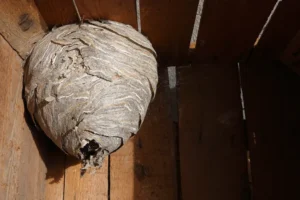 Bees, hornets, and wasps aren’t just bothersome, especially for those with allergies, they can pose a real health concern. If someone in your home is allergic, preventing these pests from nesting nearby becomes essential for their safety and peace of mind.
Bees, hornets, and wasps aren’t just bothersome, especially for those with allergies, they can pose a real health concern. If someone in your home is allergic, preventing these pests from nesting nearby becomes essential for their safety and peace of mind.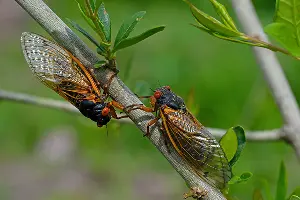 Brood XIV cicadas are set to swarm Southold in 2025, so now’s the time to prepare your property and learn how to deal with the noise and activity.
Brood XIV cicadas are set to swarm Southold in 2025, so now’s the time to prepare your property and learn how to deal with the noise and activity.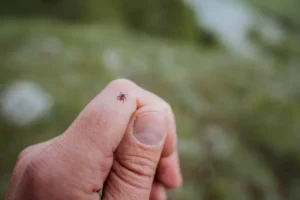 Ticks can attach to any part of the body, but they prefer warm, hidden spots like armpits, behind the ears, in joints, or in hair. They often crawl upward toward the head. After spending time in tick-prone areas, remove your clothes and use a mirror to check your body carefully for any signs of ticks.
Ticks can attach to any part of the body, but they prefer warm, hidden spots like armpits, behind the ears, in joints, or in hair. They often crawl upward toward the head. After spending time in tick-prone areas, remove your clothes and use a mirror to check your body carefully for any signs of ticks.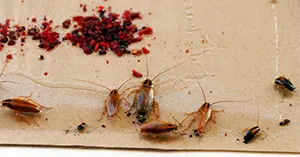 German cockroaches — the small, tan roaches you might spot scurrying in your kitchen — are among the hardest pests to keep at bay. Their ability to slip through tiny cracks, hide in obscure spots, and produce egg cases housing 30–50 nymphs makes early prevention your strongest defense.
German cockroaches — the small, tan roaches you might spot scurrying in your kitchen — are among the hardest pests to keep at bay. Their ability to slip through tiny cracks, hide in obscure spots, and produce egg cases housing 30–50 nymphs makes early prevention your strongest defense.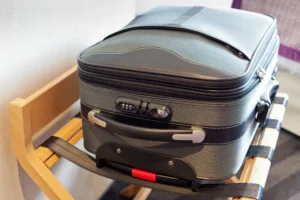 Getting ready for a trip should be all about excitement and anticipation, but sometimes, the thought of bed bugs can sneak in and interrupt the fun. It’s perfectly valid to feel a bit uneasy. No one wants a relaxing escape interrupted by tiny, uninvited guests. The upside is, with a little planning and a few savvy habits, you can ease your mind and enjoy your travels with confidence.
Getting ready for a trip should be all about excitement and anticipation, but sometimes, the thought of bed bugs can sneak in and interrupt the fun. It’s perfectly valid to feel a bit uneasy. No one wants a relaxing escape interrupted by tiny, uninvited guests. The upside is, with a little planning and a few savvy habits, you can ease your mind and enjoy your travels with confidence.
